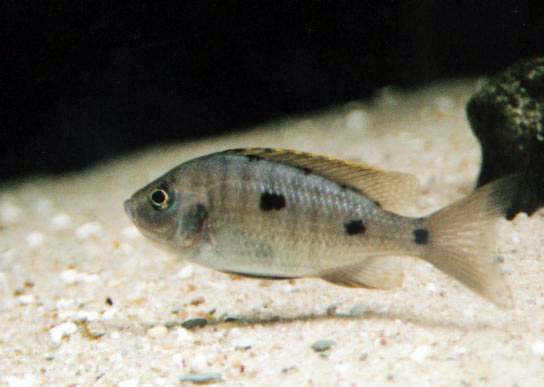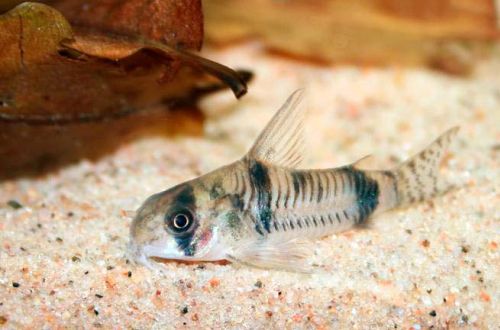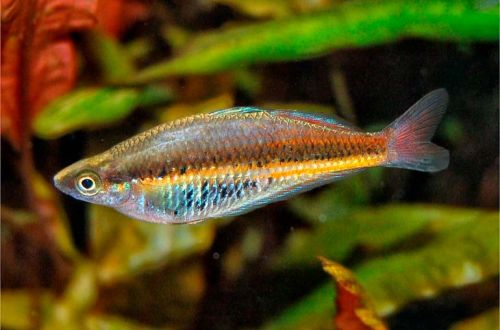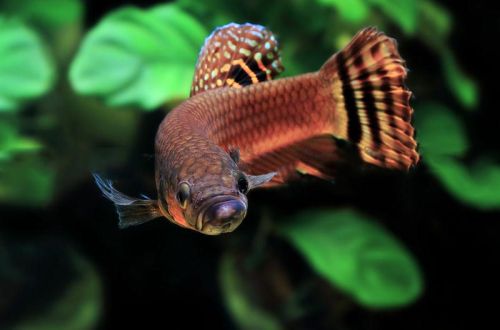
Copadichromis azureus
Copadichromis azureus, scientific name Copadichromis azureus, belongs to the family Cichlidae (Cichlids). It is a member of a group of Malawian cichlids known as Utaka. Has a calm disposition. Unpretentious, if kept in suitable conditions.

Contents
Habitat
Endemic to Lake Malawi (Nyasa) – one of the largest freshwater lakes located in East Africa on the border of the state of Malawi of the same name, as well as neighboring countries of Mozambique and Tanzania. The fish is found in the southern part of the lake in open water near the coastline at a depth of 20–30 meters.
Brief information:
- The volume of the aquarium – from 300 liters.
- Temperature – 26-28°C
- Value pH — 7.6–8.5
- Water hardness – medium and high hardness (10-25 dGH)
- Substrate type – sandy, rocky
- Lighting – subdued or moderate
- Brackish water – no
- Water movement – light or moderate
- The size of the fish is 14–16 cm.
- Nutrition – any food rich in protein
- Temperament – conditionally peaceful
- Keeping in a harem with one male and several females
Description

Adults reach a length of 14–16 cm. The fish have a large head and a high body. A characteristic feature of this group of fish are large eyes. With their sharp eyesight, they effectively prey on zooplankton in the water column.
Males are somewhat longer and brighter than females. The main color is bright blue with rows of dark vertical stripes. Some geographical varieties have black spots on the body, which are most pronounced in less bright females. The latter are painted more modestly, the main color is gray.
At a young age of up to 3 weeks, males and females look the same gray without bright colors.
Food
In nature, they feed in the water column, the basis of the diet is zooplankton. In a home aquarium, dry foods rich in protein should be fed in the form of flakes and granules. A good addition would be live or frozen brine shrimp, bloodworms, large daphnia, etc.
Maintenance and care, arrangement of the aquarium
Copadichromis azureus needs a lot of free space for swimming. For 2-3 fish it is necessary to provide about 300 liters of water. The design uses a sandy substrate and heaps of large stones and rocks.
The presence of aquatic plants is not required. If desired, it is fashionable to place a few unpretentious species that can grow in hard water, for example, Vallisneria, some Anubias, Arrowhead, as well as numerous mosses and ferns.
Water conditions should repeat the hydrochemical composition of Lake Nyasa, characterized by high pH and dGH values. In the process of water treatment, it will be necessary to use special tools to increase the overall hardness.
Aquarium maintenance is standard and consists of several mandatory procedures: weekly replacement of part of the water with fresh water and removal of organic waste (food residue, excrement). Both events are usually combined.
Behavior and Compatibility
As a member of the Utaka group, Copadichromis Azureus has a peaceful disposition. It gets along well with relatives and other non-aggressive fish that can live in alkaline conditions. However, in the confined spaces of aquariums, rivalry between males and even aggression can be observed. Lake Malawi inhabitants such as Aulonocara and other Kopadichromis, with the exception of Mbuna cichlids, will be good tankmates.
Breeding / breeding
The appearance of offspring is not uncommon in the artificial environment of aquariums. Optimum conditions for spawning are achieved at temperatures of 25–27°C and pH values around 8.0–8.5.
With the onset of the breeding season, the male chooses a place at the bottom and makes a small hole (depression) in the sand, removing debris and small pebbles from it. Then he proceeds to courtship. Sometimes they are overly active, so it is recommended to maintain a harem-type group of several females in order to scatter the attention of the male.
When one of the females is ready, she accepts courtship and lays several dozen eggs in the hole, which are immediately fertilized.
Like most fish from Lake Nyasa, brooding takes place in the mouth of the female. The incubation period lasts 3-4 weeks. All this time she does not eat and seek to retire near any shelter. It is for these purposes that heaps of stones in the design are necessary.
The fry appear large enough to accept brine shrimp nauplii, crushed dry food and other small foods.
Fish diseases
The main cause of most diseases is unsuitable conditions of detention. In the event of the first symptoms, it is necessary to check the composition of the water, the diet and the presence of injuries that may result from the aggression of the aquarium neighbors. The detection and elimination of external causes often leads to self-healing, when the body of the fish copes with the disease. However, in some cases, medical treatment will be required, for more details, see the section “Diseases of aquarium fish”.





